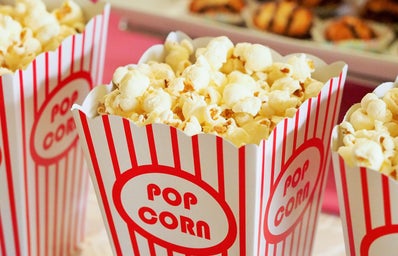An overview
The movie begins with a simulation. Blue, pink, and purple-themed images and text begin to pixelate across the screen. Shot from a first person perspective, a cursor now appears, filling out a survey -the survey was asking descriptive questions – What year of studies are you in? Freshman. What kind of school do you go to? Liberal Arts. What highschool clique do you fall under?
This unique introduction propels the viewer into director Emily Cohn’s debut film, CRSHD. Setting the scene in present day, Cohn exquisitely takes CRSHD to the big screen to show off her depiction of modern-day femininity, while analyzing topics surrounding typical high-school problems: boy problems, friendship drama, and the burning questions on the topic of sex.
This comedic film follows the story of a college freshman Izzy (Isabelle Barbier), on her final day of school. Izzy is best described as an awkward and vulnerable teenager, who wants more than ever to lose her virginity before she spends her summer at her grandparents’ house across the country. Izzy often experiences sexual fantasies, where behind her self-consciousness, there is a girl who yearns for a boy to love; but she hasn’t been given the opportunity – until now. The only way to achieve Izzy’s goal is by scoring her an invite to an exclusive, invite-only “crush party.” The rules? It’s simple. Submit your crush’s name and they’ll get an invite to the party. If you get crushed, you also get an invite. Needless to say, this party ends up being exactly as hot and steamy as Cohn makes it out to be!
Izzy, along with her two best friends Anuka (Deeksha Ketkar) and Fiona (Sadie Scott), end their first year of college alongside each other, following a storyline which tests their friendship and encourages them to explore their bodies and emotions along the way.
Exploring the technical stylings of CRSHD
Unlike any other film I’ve ever seen, CRSHD takes on a different style of technicality. Cohn does her best to highlight the use of social media throughout the film, with the screen splits into three sections, dividing Izzy, Anuka, and Fiona, so the viewer can read their texts on screen. The same happens when Izzy is looking for a crush on both Tinder and Facebook. The profile picture of the potential crush shows up, and the film dims as his face appears on camera as the potential crush reads his bios and status updates out loud. The creative dynamic of the film brought me in from the very beginning, as Cohn perfectly executed this “Gen-Z” style film. This film has proven relatable in every aspect – young teens swooning over high school heartthrobs that are ‘out of league,’ the over excessive use of social media, and second-hand embarrassment at Izzy’s unfortunate (and nonexistent) sexual encounters.
Cohn surprises audiences with the level of intimacy that her film reaches. She goes through great lengths to tell the story of every character, allowing them to embrace their vulnerability as if it’s their greatest personality trait. Cohn takes personal experiences of her own and recounts them through the stories of her characters, allowing awkward and self-conscious teens everywhere to be able to relate.
Cohn also touches on high school cliques and their importance through the film. Each character is distinctly dressed to fit in, but as opposed to using common terms like “jock” and “prep,” Cohn defines the cliques that everyone thought were cool in newer terms, leaning towards vocabulary such as “art hoes” and “punk-boys.”
All in all, CRSHD tells a tantalizing tale about the importance of navigating your way through friendships and love, especially through high school. The elegance of this film is sure to touch the hearts of viewers everywhere, while discussing its important messages of feminism and sex, through the most real and most prominent form of communciation to date: social media. Cohn’s heartwarming tale will surely satisfy audiences both young and old for many crush parties to come.
Emily Cohn on the making of CRSHD
After the film was shown at the TIFF Next Wave festival, Cohn answered audience questions. Cohn also answered the following questions via email.
If you could go back in time and do one thing differently, what would it be?
Cohn: The one thing I would love to do differently for the next project is to have everyone be paid properly. As that wasn’t really possible [for CRSHD]. Other than that, we didn’t have a table read of the script before shooting, which we could have done and would have made a big difference in our efficiency during production.
How much of the film was based on a true story?
Cohn: There were crush parties at my school. I was never crushed, but my friend was. The film was emotionally true, but some scenes were entirely real. One example in particular was the DJ scene, where I fumbled my way through telling a guy I liked his shirt over loud music at a party.
How did you really get into filming this project?
Cohn: I wrote the movie in 2016. I had credibility from high school films, and we worked really hard to get this project off the ground. We did crowdfunding in post production. But from the start, the train to make the film was leaving the station no matter how much money we had. I invested some, my mom invested some and our executive producer invested the most. Everyone was basically working for free at the time and putting their hearts and souls into [CRSHD]. Now, it’s been two and a half years since the movie was shot at a time where female friendship wasn’t on screen as much as it has been. It’s been so exciting to see that shift.
How did you come up with the production techniques?
Cohn: We all spend so much of our lives on our phones even though they cause us to feel a mix of emotions, good and bad. I wanted to make being on our phones more engaging than just reading text bubbles on screen. Doing it this way just felt more realistic to how we experience texting and swiping on Tinder etc.
Lastly, can you tell us about the stereotypes and cliques of the film?
Cohn: Well, these sort of alternative cliques were my real experience. There were the “hipster elites” at my college and various queer scenes. Believe it or not, the first thing I brought in to pitch the TV show version of CRSHD was a glossary of the terms, from “softboy” to “e-boy” and “e-girl.” It’s important in defining how we all self-classify or define others through these new genres of stereotypes.



